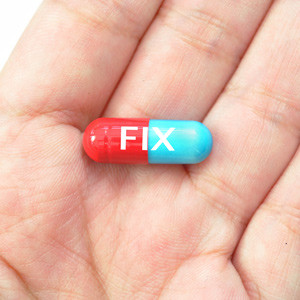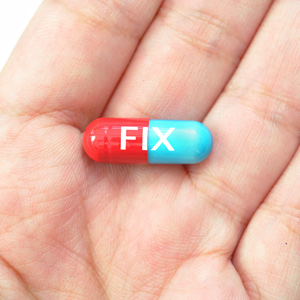The weight loss industry as a whole can be shady. There are constantly new pills, procedures, and diets coming on the market to help you look better. But they come with a hefty price tag and usually don’t work. If they somehow do work, it usually isn’t sustainable long-term and you wind up right back where you started a few months later.
The reason this occurs is our society is all about quick fixes. Many believe they can take a pill and magically fix their diabetes, obesity, and poor nutritional habits. Unfortunately, the hard truth is it doesn’t work like this.
It can take months and years to become overweight, diabetic, hypertensive, etc. So if it takes this long don’t you think it will take a little bit of time to reverse these trends?
I know that isn’t what most people want to hear, but it’s the truth. Weight loss is never super fast like you see in the reality tv shows, if it’s going to be sustainable. Why? Because you need to be able to maintain your effort for the long haul.
These shows have the contestants taking in a crazy low amount of calories, while working out multiple times per day. The feel like crap, sleep like crap, and most put on the weight they lost within months of exiting the show. They simply can’t maintain that lifestyle forever.
We all have schedules to follow on a daily basis filled with meetings, errands, and work. You need a plan that works for you and not the other way around.
The good news is weight loss itself is rather easy. The hard part is staying consistent. Like I said, you want to be able to maintain your efforts, and sustainability=consistency. So I want to share five easy steps you can use to create a sustainable weight loss plan.
I’ll be honest, most of these you have probably heard before. But they are tried and true, and will work for you if you actually do them. So let’s dive in!
Step 1: Create a caloric deficit
I wrote an article on this last week. The main thing you need to know here is that in order to see a drop on the scale you need a drop in food quantity. Eating less is correlated with a lower weight.
In order to do this you can track your food using an app like www.myfitnesspal.com. This app allows you to determine how many calories you take in plus how much of those calories come from carbs, fats, and protein.
Using this info, drop your calories by 200-300 just to start off. If you are not seeing any weight loss, then drop 100 more. Continue doing this until you are losing about 1-2 pounds per week.
Step 2: Eat more real, whole foods
This one is pretty much a given. If the majority of your meals are made up of processed, refined foods then you will not see results very quickly.
Most foods today are labeled as “healthy” if they have titles like “low fat”, “no preservatives”, and “all natural”. But they’re far from it. These foods have been concocted using lots of chemicals and ingredients.
It’s best to try to limit these as much as possible, because they are loaded with calories and are not satiating. Real food on the other hand, like the kind that was once living or growing out of the ground, does. And that’s what I want you to focus on.
Here are the basics:
a. Include protein at every meal
Try to include 1-2 servings of animal protein at each meal. An average serving is 4oz. which is about the size of your palm or a deck of cards.
b. Eat as many vegetables as you want
Veggies are low in calories, loaded with fiber, and very filling. It is extremely hard to overeat vegetables so be sure to include a lot of them.
c. Include several servings of fruit
I read an article the other day that included about 20 things to do to lose weight. One of them was to eat less fruit. There’s a famous strength coach by the name of Dan John who has said “I’ve never seen anyone get fat on eating grapes”.
I think that statement is perfect. Fruit is delicious, most are low in calories, and help curb your sweet tooth. Eating fruit isn’t going to make you fat, unless you are overeating it of course. Be sure to include 2-3 servings of fruit daily. A serving would be the size of a baseball or your fist (i.e. an apple).
d. Include a moderate amount of fat
Fats should make up about 15-35% of your entire diet. Good fats are things like olive oil, coconut oil, nuts, and avocados. There are also fats in animal products like meat and eggs, so be sure to take that into account when eating.
Fats contain 9 calories per gram, versus 4 calories per gram in protein and carbs. Because of this, you don’t need to eat as many grams on a daily basis.
e. Make sure the bulk of your carbohydrates come from good sources
Most processed foods are loaded with carbohydrates. Processed carbs digest very quickly and do not satisfy hunger. This makes you more prone to overeat them. That’s why it’s so important to choose better sources.
Things like rice, sweet potatoes, white potatoes, and ezekiel bread are great. These foods fill you up and take longer to digest than refined carbs. As a minimum include 1-2 servings per day.
Just like fruit, a serving would be about the size of your fist. If you are more active (exercise around 3-5 days per week) then don’t be afraid to eat more. You need more carbohydrates to fuel your body’s energy demands.
Step 3: Swap calorie laden beverages for water, coffee, or tea
Calorie containing beverages are among the easiest thing to over-consume. Liquids usually do not provide a satiating effect. That’s why it’s best to consume a calorie free beverage like water, coffee, or green tea.
Step 4: Increase daily non-exercise physical activity
Non-exercise physical activity is the type of activity that really isn’t considered traditional “exercise”. Things like taking the stairs versus the elevator, parking farther away, going on a walk, and getting up a couple times per hour a work to walk around are all perfect examples.
Increasing these activities burns more calories than sitting down, obviously. And most people are more prone to sitting down, whether at home, work, or an event. This step is essentially about getting you to move a little more during the day.
Step 5: Lift weights 2-3 times per week
Is this step absolutely crucial for weight loss? No. But is it beneficial? Yes! Here’s why.
Most people who want to lose weight have a slow metabolism. This basically means they do not burn as many calories during the day as a leaner person with less body fat. One of the main things that can help you increase the rate at which you burn calories during the day is more muscle mass.
You achieve this by lifting weights. Another cool thing is you can increase levels of testosterone and growth hormone with resistance training. These two hormones are key players in the fat burning game.
Muscle also gives your body shape and definition. It’s what makes the difference between sculpted arms and flabby arms. Most people want the former.
Focus on big compound exercise like squats, deadlifts, hip thrusts, push ups, pull-ups, and rows. These exercise use multiple muscle groups to provide the best calorie burning bang for your training buck!
Wrapping up
The steps I have outlined here aren’t earth shattering by any means but they are simple. And everyone likes simple. There will never be a magic pill to fix everything. Seeing results takes work, effort, and persistence.
The name of the game is sustainability. Strict diets and non-stop exercise will never be a good long-term solution. The strategy I have outline here can be be made to fit anyone’s schedule.
The great thing too is you will probably put money back into your pocket instead of taking from it. These tips can help you get in the habit of making your own meals and improve many biomarkers of health like cholesterol and blood pressure. That’s money you save by not eating out, seeing the doctor, or buying medication.
It all comes down to taking action. Use this article as your guide to losing weight and keeping it off for good!
Photo Credit:
1. http://famousbloggers.net/magic-pill-internet-marketing.html







